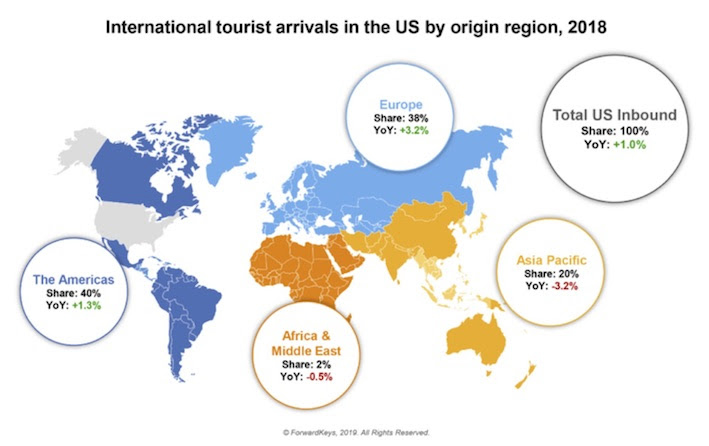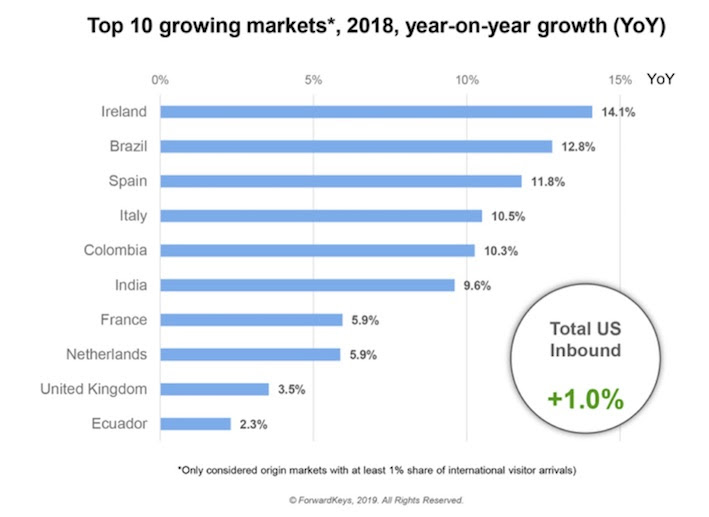 The number of tourists arriving in the United States from the Asia Pacific region fell by 3.2% last year, according to latest findings from ForwardKeys.
The number of tourists arriving in the United States from the Asia Pacific region fell by 3.2% last year, according to latest findings from ForwardKeys.
The Kilauea volcano eruption in Hawaii (a top destination for Japanese travelers to the U.S.) contributed to a drop in U.S.-bound tourism in the second half of 2018.
In addition, the number of Chinese visitors to the U.S. during the year remained flat (0.0% growth) amid the ongoing trade war between the two countries.
Asia Pacific represents a 20% market share of U.S. inbound travel.
On the plus-side, the figures show a 3.2% increase in European visitors to the U.S. compared with 2017, representing a 38% market share. But German tourists stayed away, down 8.7% on 2017.
The European nations leading the tourism growth are Ireland, up 14.1%, Spain, up 11.8%, and Italy, up 10.5%. Elsewhere, Brazil, up 12.8%, and Colombia, up 10.3%, helped account for a 1.3% growth from The Americas.
 Overall, total international tourist arrivals in the U.S. in 2018 showed very modest growth, up 1.0% on the previous year.
Overall, total international tourist arrivals in the U.S. in 2018 showed very modest growth, up 1.0% on the previous year.
New York City consolidated its position as the top U.S. destination for international travelers, up 2.1%. The Northeast as whole grew by 2.8%. Fort Lauderdale, in the South, and Detroit, in the Midwest, were the fastest-growing destinations, up 12.8% and 12.5% respectively.
ForwardKeys analyzes 17 million flight booking transactions a day.









